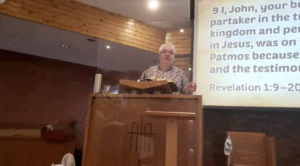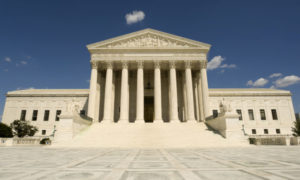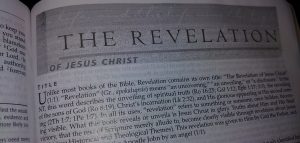An Assignment for Bible Survey…
 Below is an assignment I had to hand in for my Bible Survey course. For the assignment, I had to choose two books that are important to me (one from the Old Testament and one from the New) and explain why they were important to me and what i could do to communicate that importance to others. I left out “I could put it up on BereanNation.com” because it would just be too much. XD
Below is an assignment I had to hand in for my Bible Survey course. For the assignment, I had to choose two books that are important to me (one from the Old Testament and one from the New) and explain why they were important to me and what i could do to communicate that importance to others. I left out “I could put it up on BereanNation.com” because it would just be too much. XD
Part 2a: Genesis
I have chosen Genesis as my Old Testament book because it deals with first occurrences and how the story of human sinfulness and redemption begins. The Biblical narrative begins with the story of how God created the heavens and the earth, and placed humankind in the garden, having created us in His own image. Several things of note pop up, among which are that God created male and female humans in His image. These humans were together and had no need for clothing in each other’s or God’s presence. They were true partners, each helping, indeed completing the other. Call me a romantic, but it seems that they were in fact made with each other in mind.
Adam was given one simple command – don’t eat the fruit of the tree of the knowledge of good and evil. He was given that command before Eve was on the scene, and one can conclude that it was Adam’s duty to communicate that to Eve. He seems to have done so, though there is a question of accuracy of transmission [insert wry smile here]. When Eve is tricked into eating the fruit, Adam is not – and chooses to eat the fruit anyway, resulting in humankind rebelling against God and being expelled from paradise. However, as a part of that story (Gen. 3:15), God includes the promise that the “seed” of the woman would ultimately triumph over the “seed” of the serpent, which begins part of another metanarrative of Scripture – the war between the two seeds that fills most of the rest of Scripture in some form, ultimately won by Jesus Christ with His death and resurrection much later in history. It is from this point that the story of the seed of the woman is recorded. Initially, it seemed like it would go through Abel, who was the victim of the first murder in history. Ultimately, it goes through Seth, another son of Adam, down through Enoch, Methuselah, and ultimately Noah, who becomes an archetype of the salvation of humankind when God saves Noah and his three sons and their wives from the destruction of the world through a global flood.
Throughout the narrative, the deeds of the two seeds are made known. The Tower of Babel was built by Nimrod and his cohorts in the land of Shinar (modern-day Iraq/Iran (defined on the maps at the back of most Bibles). God confused the ability to communicate with each other and thwarted the presumptuous plans of Nimrod et al.
Within the subset of people that were in that area, in Ur of the Chaldees, was Terah, the father of Abram (who became Abraham). Within His story, you can still see that war between the seeds, and something of note – in Genesis 15:6, it tells us that Abram believed God, and that belief [Heb., aman, to trust or confirm; to find trustworthy] was reckoned [Heb., chashab, to account or impute] to him as righteousness. Before the Law is given (430 years from this point according to Paul), before there is a nation of Israel, faith in God is equated with righteousness, and it is mentioned here for the very first time in this context (though it is referred to earlier without naming the concept in the story of Enoch – he walked with God, and then was not, for God took him; Gen. 5:24). He has two sons, and God’s seed, that is His plan for redeeming humankind, is through the younger son, Isaac. Isaac has two sons, and God’s plan moves through the younger son again. Israel has 12 sons, and the plan does not go through the firstborn son again, as Judah becomes the chosen vessel. This becomes a stark contrast to the way humans carry things out, where it is always the firstborn male that becomes important. By the end of the book, one realizes that God has established a plan and a way of working, and that we would do well to pay attention to His ways and not ours, as the two ways are very different.
Part 2b: Revelation
Revelation, despite being the last book in Scripture, is very important, both to read and to try to understand. It is the only book in the Bible that promises a special blessing just for reading it (Rev. 1:3). Just as Genesis is a book of beginnings and first mentions, Revelation is a book of conclusions and final states. (And I have a pet peeve here, it is Revelation, singular. That’s the Apostle John’s title, not mine, and I think we should use it. It is not Revelations 3, it is Revelation 3.)
The book itself is written in apocalyptic style, and uses a great deal of figurative language, but that does not mean that deep meaning is not there, and that it is to be avoided as much of Christendom seems to do these days. We know how the story began, we know how the victory was won, and do we not also need to know how to conduct ourselves until the promised return of Jesus (Matt. 24:44)? I think we do, and I am not alone in that sentiment (John MacArthur, James White, the late Dr. R. C. Sproul, and the late Billy Graham are prime examples of those who agree).
Of particular interest in the book are chapters 2 and 3, which contain seven letters to seven churches that were dictated to the apostle John by Jesus Christ, the King of Kings Himself, and these letters cover the problems that are foremost in churches today, to say nothing of their prophetic value. Depending on one’s hermeneutics, one could even see a pattern through history that matches church history very closely, but I do not wish to digress. It is my opinion that every Christian should at least know the contents of those letters, to say nothing of the need to watch for the errant tendencies talked about in those letters while we wait for the King to appear as He promised.
In the book itself, we find a conclusion to what some have termed the “church age.” All believers are found at the side of Jesus and worshipping Him. There is a conclusion for the nation of Israel, in that it will finally be redeemed once and for all by Jesus Himself. There is a conclusion to the politics of power as it is crushed by the King Himself. There is a conclusion to the reign of Satan over the world as he falls in a great heavenly battle with Michael and his forces. There is a conclusion to those who will not believe, though it is not a happy ending. There is a conclusion to the wrath of God, which will be poured out on the earth. There is a conclusion to the false religion of Babylon (basic idolatry at least). There will be an end to sin for us. With that will come and end to death, an end to sorrow, and an end to pain. Ultimately, there is an end to this frame of reality and time, and something new comes in, which we only glimpse in the closing chapters of the book, but that comes with an incredible invitation: Come (Rev. 22:17). Come as you are. Come and see. Come and experience. Come and be satisfied.
With that final invitation, the book closes, but its importance in terms of faith building, our conduct during what one has termed “inaugurated eschatology,” and the final state of humankind is difficult to miss, regardless of personal hermeneutics. As Genesis is important in getting things started, Revelation is important in concluding the story with hope for the reader. Though the human story begins poorly, it can end well for those who will be reconciled to God. That reconciliation is even possible is an amazing gift of grace from God, and truly shows His love for us.
I find that the best way to communicate the importance of any text is to study it publicly, and as I speak, to highlight points that show the theme of the book. Barring that, I could write a paper…oh, wait…[insert chuckle here]







